News
BTC hits new highs, but these 4 altcoins promise bigger ROI by 2025
Published
5 months agoon
By
admin

Disclosure: This article does not represent investment advice. The content and materials featured on this page are for educational purposes only.
Bitcoin hits record highs, but four altcoins show potential for higher returns by 2025, poised to outshine the market leader.
Bitcoin is soaring to record levels, drawing the eyes of investors everywhere. But while it dominates the headlines, other digital currencies may offer even greater gains. Four unique altcoins are showing promise for higher returns by 2025. These emerging players could outshine Bitcoin’s performance. Explore which cryptocurrencies might deliver bigger profits in the coming years.
CYBRO presale surpasses $4M: A unique DeFi investment opportunity
CYBRO is seizing the spotlight in the crypto market as its exclusive token presale climbs past the $4 million threshold. As a next-generation multichain DeFi platform, CYBRO delivers exceptional investment opportunities, enabling users to optimize their earnings across multiple blockchains, regardless of market fluctuations.
At a presale price of just $0.04 per token, CYBRO presents a rare chance for substantial returns, with experts forecasting a potential ROI of up to 1200%. This unique project has already captured the interest of prominent crypto whales and influencers, reflecting the strong belief in CYBRO’s technology and vision.
CYBRO token holders stand to gain a range of valuable benefits, including generous staking rewards, access to exclusive airdrops, cashback incentives, reduced trading and lending fees, and a comprehensive insurance program to ensure investor protection.
With only 21% of the total token supply available during this presale and over 100 million tokens already claimed, this is a unique opportunity for astute investors to take part in a project poised for exponential growth.
AVAX: Exploring Avalanche’s Layer-1 blockchain and its potential
Avalanche is a Layer-1 blockchain known for its low fees and fast transactions. It can process up to 4,500 transactions per second. Users can launch customizable Subnets on the platform. It uses a hybrid consensus mechanism that combines classical and Nakamoto consensus principles. This design aims for transaction finality in less than two seconds. The platform includes three interoperable chains: X-Chain, C-Chain, and P-Chain.
These chains handle various operations like transactions and smart contract executions. AVAX is the native token of Avalanche. It is used for transaction fees, staking for network security, and operating Subnets. AVAX has utility in payments, staking, and enabling the creation of custom tokens and blockchains.
Polkadot bridging blockchains with speed and scalability
Polkadot is a decentralized protocol and cryptocurrency that allows different blockchains to communicate securely. It enables the sharing of value and data between chains like Ethereum and Bitcoin without intermediaries. Polkadot uses parachains to improve speed and scalability, handling more transactions than Bitcoin and Ethereum. The DOT token is used for governance and staking in the network.
Holders can take part in decision-making and help verify transactions. Polkadot was developed by Gavin Wood, a co-creator of Ethereum, and is maintained by the Web3 Foundation. It aims to create more connected and efficient blockchains.
POL Token: Empowering the Polygon network’s growth
POL is the utility token of the Polygon network. It plays a crucial role in the ecosystem’s operations. Holders can stake POL to secure the network and earn rewards. They participate in governance by voting on proposals that shape the network’s development. This gives the community a direct influence on Polygon’s direction. POL also unlocks access to exclusive services, providing special features and applications within the ecosystem.
As the network expands and integrates more services, the uses for POL increase. This boosts its importance and demand within the ecosystem. POL’s various functions support the growth and functionality of the Polygon network, making it a key part of its operation.
Conclusion
While AVAX, DOT, and POL show promise for future gains, their short-term potential appears limited. In contrast, CYBRO emerges as a standout option. As a unique DeFi platform on the Blast blockchain, CYBRO provides investors with unmatched opportunities to boost their returns through AI-driven yield aggregation. It offers appealing staking rewards, special airdrops, and cashback on purchases. Users enjoy smooth deposits and withdrawals, ensuring a top-tier experience. With a focus on openness, compliance, and excellence, CYBRO distinguishes itself as a noteworthy project attracting strong interest from major crypto investors and influencers.
For more information, visit the official CYBRO website and join the community on X, Telegram, and Discord.
Disclosure: This content is provided by a third party. crypto.news does not endorse any product mentioned on this page. Users must do their own research before taking any actions related to the company.
Source link
You may like


Futureverse Acquires Candy Digital, Taps DC Comics and Netflix IP to Boost Metaverse Strategy


Court Grants Ripple And SEC’s Joint Motion To Suspend Appeal


AVAX Falls 2.1% as Nearly All Assets Trade Lower


What is a VTuber, and how do you become one in 2025?


Top Expert’s Update Sets $10 Target


How Academia Interacts With The Bitcoin Ecosystem
cryptocurrency
AI crypto tokens at risk as Nvidia faces restrictions on China exports
Published
8 hours agoon
April 16, 2025By
admin
AI-focused crypto tokens are seeing a dip as Nvidia, the top AI chipmaker fueling the space, could soon take a major financial hit due to new U.S. export restrictions.
In a filing on April 14, Nvidia said it expects around $5.5 billion in charges for the first quarter of fiscal year 2026 because of U.S. government rules limiting its AI chip sales to China.
On April 9, officials told Nvidia it now needs special export licenses for its popular H20 chips and others with similar capabilities. The new restrictions target China, Hong Kong, and Macau, with the government warning that the chips could end up powering Chinese supercomputers.
The H20 chip is the most advanced AI chip Nvidia is currently allowed to sell in China under the earlier rules. It’s reportedly been used by Chinese AI startup DeepSeek to train models, something that has raised concerns among U.S. lawmakers.
Even though Nvidia said it plans to spend hundreds of millions over the next four years making some AI chips in the U.S., that hasn’t stopped the stock from sliding after its latest filing and the expected hit to future revenues. NVDA dropped 6.3% in after-hours trading on April 15 to $105.10, and it’s down about 16.45% so far this year.
Nvidia’s decline mirrors a wider pullback in tech as Trump’s tariff escalation rattles investor confidence across the sector. Other prominent tech stocks were also in the red, with Apple down 0.20% from the previous close to $202.14, Microsoft off 0.56% at $385.73, Alphabet sliding 1.71% to $156.31, and Amazon dropping 1.33% to $179.59.
Adding to Nvidia’s troubles, a “death cross” has formed on the 1-day NVDA/USD chart, a bearish technical signal where its 50-day moving average drops below the 200-day one. The last time this happened was in April 2022, and Nvidia’s stock plunged nearly 50% in the following six months.
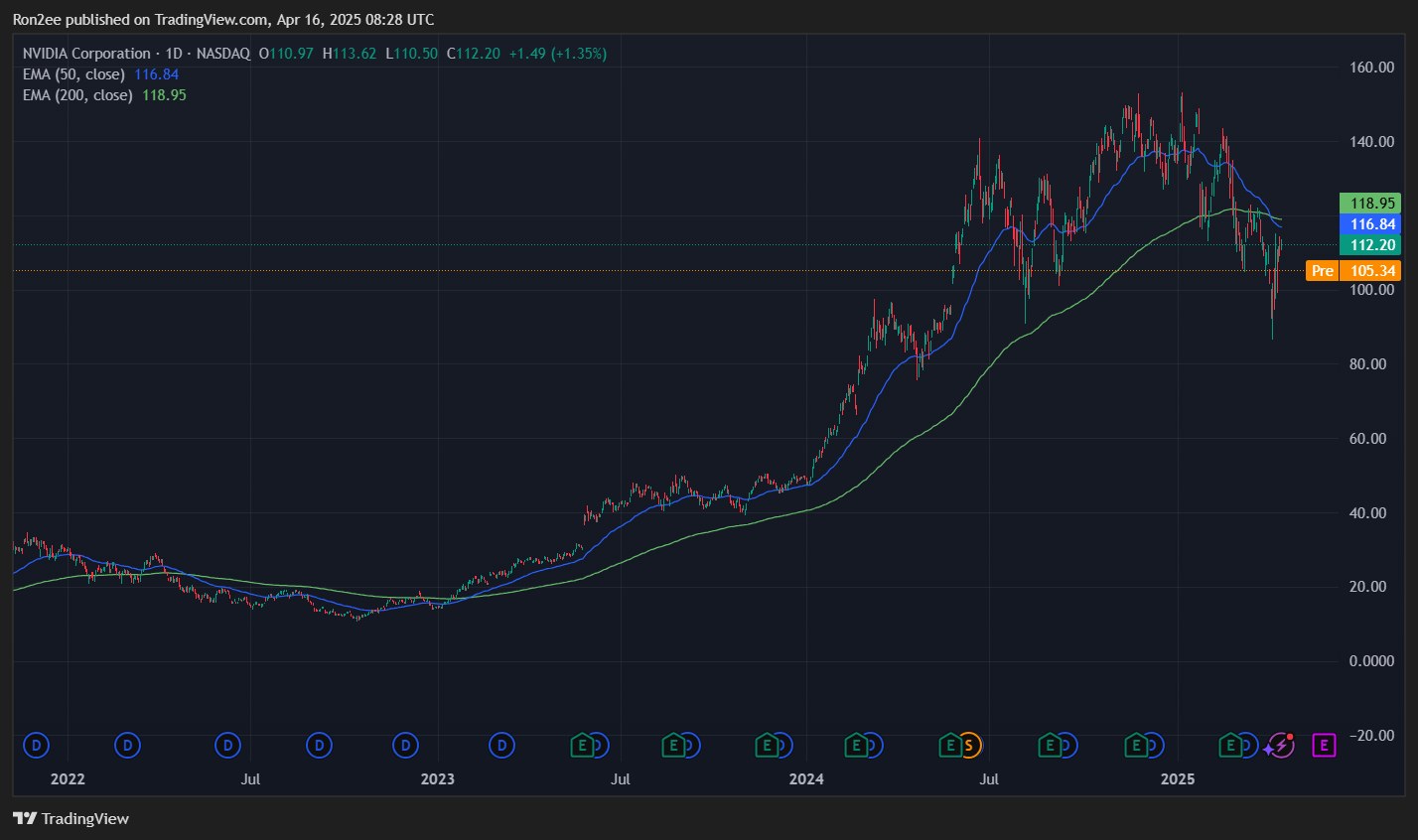
That’s got investors in AI crypto tokens on edge, as these tokens have often reacted to Nvidia-related news mostly due to the fact that Nvidia’s hardware plays a central role in powering the AI infrastructure that many of these projects rely on.
For instance, in December, reports of China launching an antitrust probe into Nvidia caused the AI crypto token market cap to drop by over 14% in a single day. In the past, a surge in the Nvidia stock price has also resulted in bullish rallies for AI tokens.
Following Nvidia’s latest filing, the total market cap of AI-related tokens has fallen 3.7% in the past 24 hours, now sitting at around $20.1 billion. Trading volume also declined, signaling weaker demand.
Near Protocol (NEAR), the biggest AI crypto by market cap, slid 5.3% over the past day. Other major tokens like Internet Computer (ICP), Render (RENDER), Sei (SEI), Virtuals Protocol (VIRTUAL), and Akash Network (AKT) also lost between 5% and 12%.
Source link
Bitcoin
Bitcoin Indicator Flashing Bullish for First Time in 18 Weeks, Says Analyst Who Called May 2021 Crypto Collapse
Published
16 hours agoon
April 16, 2025By
admin
A crypto analyst who nailed the 2021 Bitcoin market meltdown says that a BTC indicator is suddenly flashing bullish.
Pseudonymous analyst Dave the Wave tells his 149,300 followers on the social media platform X that Bitcoin’s weekly logarithmic moving average convergence divergence (LMACD) histogram indicator is starting to strengthen, signaling a possible rally.
The LMACD histogram indicator is designed to signal changes in an asset’s trend, strength and momentum. Shrinking bars on the histogram suggest that an asset’s trend momentum is weakening. In Bitcoin’s case, the histogram’s declining red bars may indicate that a market reversal is in sight.
Says Dave the Wave,
“Bull markets climb a wall of worry. First strengthening histogram on the weekly BTC chart in 18 weeks/4.5 months. Weekly MACD itself has not been below the zero-line, in bear territory, since Feb 2023, i.e.; an ongoing bull market. People drop the ball when they ignore the technicals.”

Next up, he looks at the BTC/gold ratio, which is the value of Bitcoin relative to the price of gold. Based on the trader’s chart, he appears to suggest that the BTC/gold ratio may have topped out, indicating that Bitcoin may soon outperform gold.
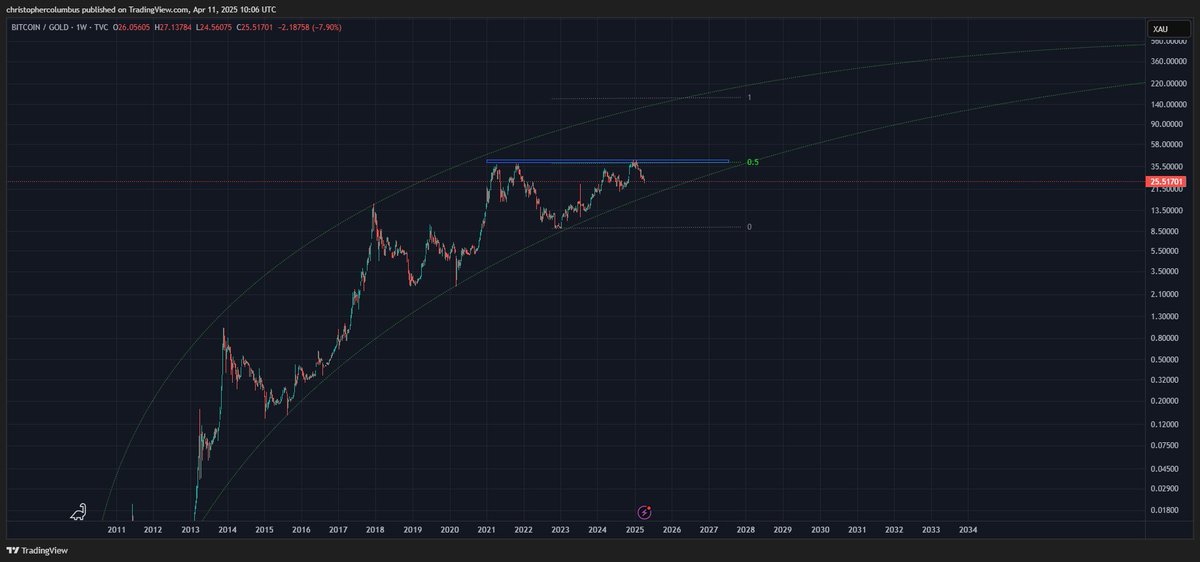
Lastly, Dave the Wave shares a chart that shows BTC has been out of the “buy zone” of his logarithmic growth curve (LGC) since it was last trading around $40,000.
The LGC aims to forecast Bitcoin’s market cycle highs and lows while filtering out short-term volatility.
“Back when BTC was half the price that was the last time it hit the LGC ‘buy zone.’”

Bitcoin is trading for $84,459 at time of writing, flat on the day.
Follow us on X, Facebook and Telegram
Don’t Miss a Beat – Subscribe to get email alerts delivered directly to your inbox
Check Price Action
Surf The Daily Hodl Mix
 

Disclaimer: Opinions expressed at The Daily Hodl are not investment advice. Investors should do their due diligence before making any high-risk investments in Bitcoin, cryptocurrency or digital assets. Please be advised that your transfers and trades are at your own risk, and any losses you may incur are your responsibility. The Daily Hodl does not recommend the buying or selling of any cryptocurrencies or digital assets, nor is The Daily Hodl an investment advisor. Please note that The Daily Hodl participates in affiliate marketing.
Generated Image: Midjourney
Source link
ETF
3iQ and Figment to launch North America’s first Solana staking ETF
Published
16 hours agoon
April 16, 2025By
admin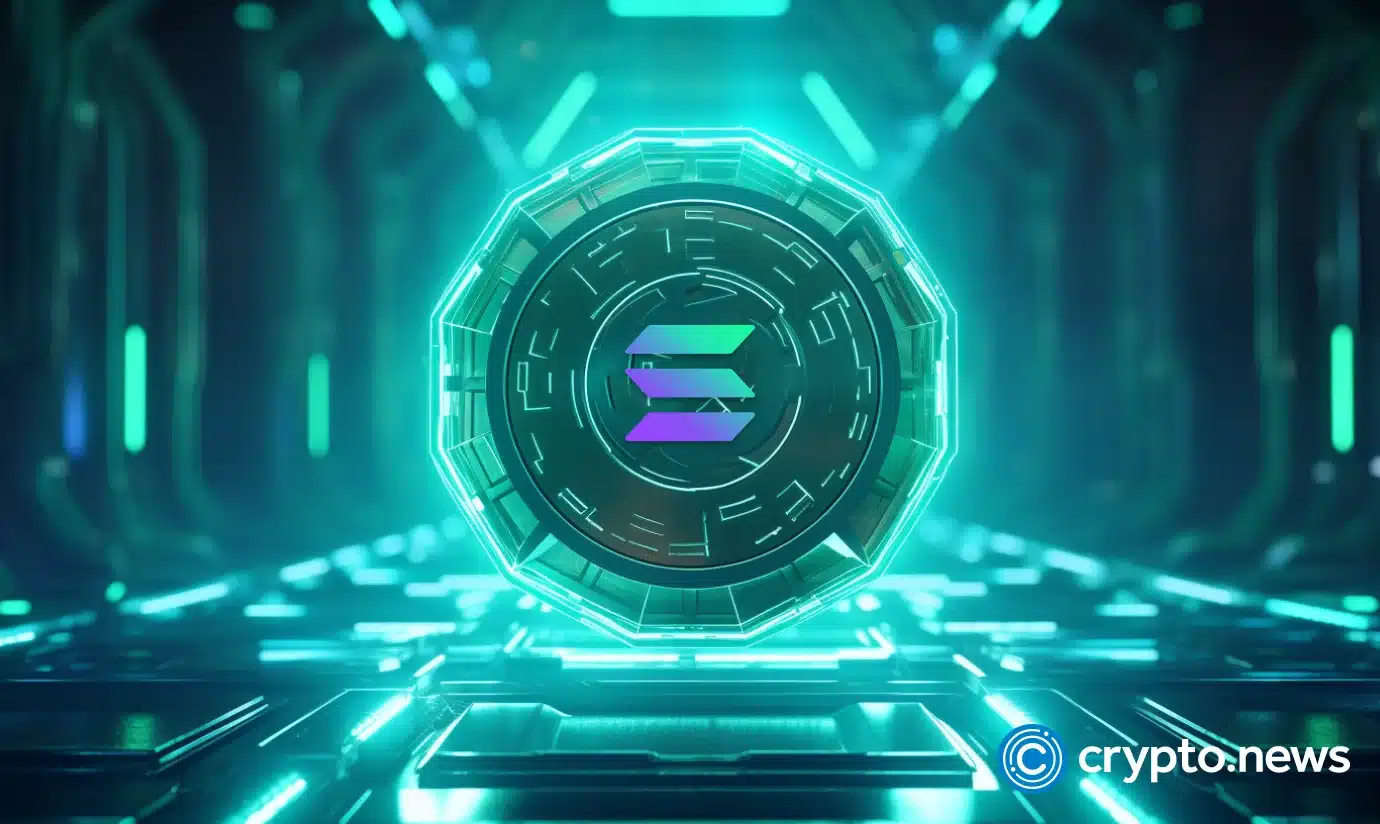
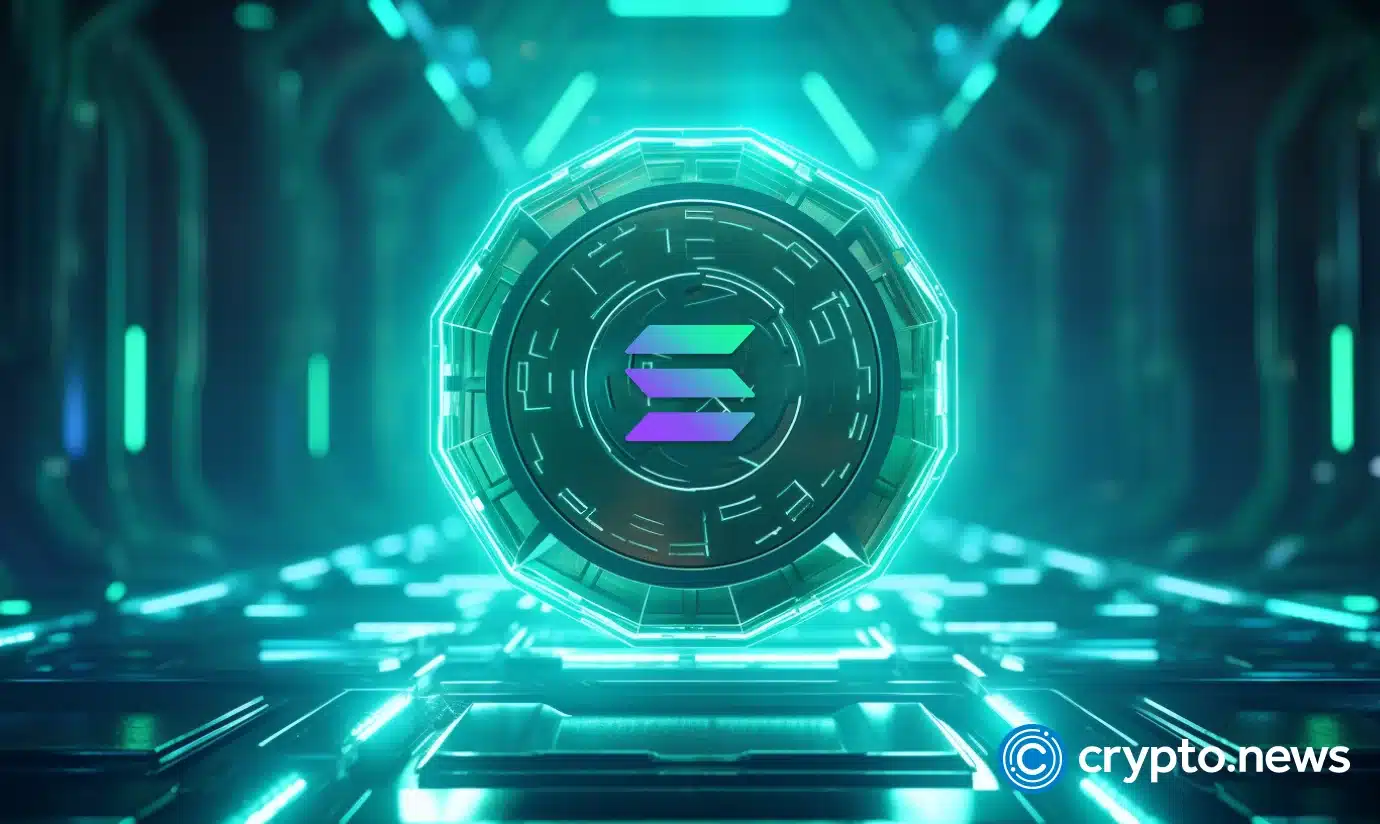
3iQ Corp. has tapped Figment as the primary staking provider for its new Solana Staking ETF (TSX: SOLQ), which officially launches on the Toronto Stock Exchange on Wednesday at 9:30 AM EST.
The announcement represents the first product of its kind in North America to incorporate native Solana (SOL) staking rewards into an exchange-traded format.
SOLQ gives investors regulated, exchange-traded access to Solana’s native staking yield, traditionally reserved for crypto-native users who either run validator nodes or delegate tokens to existing validators, without the complexity of self-custody or direct protocol interaction.
Figment, a longtime Solana ecosystem player and one of its genesis validators, will handle staking operations on behalf of the ETF.
The company brings a robust infrastructure to the table: over $15 billion in assets staked across 40+ protocols, a perfect slashing prevention record, and a client base of over 700 institutional partners.
“By combining institutional-grade staking infrastructure with traditional investment vehicles, we’re making sustainable staking yields accessible to a new class of investors,” said Lorien Gabel, CEO and co-founder of Figment.
3iQ continues its push into staking ETFs
This move builds on 3iQ’s history of pioneering digital asset products in traditional markets. The firm previously launched the world’s first Ether Staking ETF in 2023, and the Bitcoin ETF (TSX: BTCQ), which became the first Bitcoin ETP to trade on a major global stock exchange.
“At 3iQ, we are proud to continue our tradition of innovation,” said 3iQ President and CEO Pascal St-Jean. “This product reinforces our commitment to aligning with top-tier partners who share our vision for unlocking the full value of the digital asset ecosystem.”
Source link

Futureverse Acquires Candy Digital, Taps DC Comics and Netflix IP to Boost Metaverse Strategy
Court Grants Ripple And SEC’s Joint Motion To Suspend Appeal

AVAX Falls 2.1% as Nearly All Assets Trade Lower

What is a VTuber, and how do you become one in 2025?

Top Expert’s Update Sets $10 Target

How Academia Interacts With The Bitcoin Ecosystem

AB DAO and Bitget Launch Dual Reward Campaign, Distributing $2.6M Worth of $AB Globally

AI crypto tokens at risk as Nvidia faces restrictions on China exports

Coinbase Urges Australia to Vote for Crypto Progress in May

How High Would Pi Network Price Go If Pi Coin Adopts Transparency to Avoid Mantra Pitfalls

XRP’s ‘Rising Wedge’ Breakdown Puts Focus on $1.6 Price Support

China selling seized crypto to top up coffers as economy slows: Report

Ethereum Price Dips Again—Time to Panic or Opportunity to Buy?

The Inverse Of Clown World”

Bitcoin Indicator Flashing Bullish for First Time in 18 Weeks, Says Analyst Who Called May 2021 Crypto Collapse

Arthur Hayes, Murad’s Prediction For Meme Coins, AI & DeFi Coins For 2025

Expert Sees Bitcoin Dipping To $50K While Bullish Signs Persist

Aptos Leverages Chainlink To Enhance Scalability and Data Access

Bitcoin Could Rally to $80,000 on the Eve of US Elections

Crypto’s Big Trump Gamble Is Risky

Sonic Now ‘Golden Standard’ of Layer-2s After Scaling Transactions to 16,000+ per Second, Says Andre Cronje

Institutional Investors Go All In on Crypto as 57% Plan to Boost Allocations as Bull Run Heats Up, Sygnum Survey Reveals

Ripple-SEC Case Ends, But These 3 Rivals Could Jump 500x

3 Voting Polls Show Why Ripple’s XRP Price Could Hit $10 Soon

Has The Bitcoin Price Already Peaked?

A16z-backed Espresso announces mainnet launch of core product

The Future of Bitcoin: Scaling, Institutional Adoption, and Strategic Reserves with Rich Rines

Xmas Altcoin Rally Insights by BNM Agent I

Blockchain groups challenge new broker reporting rule

I’m Grateful for Trump’s Embrace of Bitcoin
Trending

 24/7 Cryptocurrency News5 months ago
24/7 Cryptocurrency News5 months agoArthur Hayes, Murad’s Prediction For Meme Coins, AI & DeFi Coins For 2025

 Bitcoin3 months ago
Bitcoin3 months agoExpert Sees Bitcoin Dipping To $50K While Bullish Signs Persist
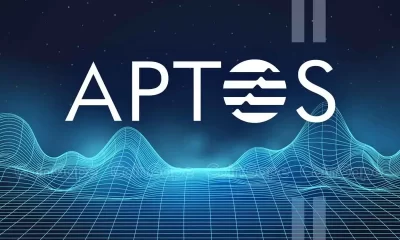
 24/7 Cryptocurrency News3 months ago
24/7 Cryptocurrency News3 months agoAptos Leverages Chainlink To Enhance Scalability and Data Access

 Bitcoin5 months ago
Bitcoin5 months agoBitcoin Could Rally to $80,000 on the Eve of US Elections

 Opinion5 months ago
Opinion5 months agoCrypto’s Big Trump Gamble Is Risky

 Altcoins3 months ago
Altcoins3 months agoSonic Now ‘Golden Standard’ of Layer-2s After Scaling Transactions to 16,000+ per Second, Says Andre Cronje

 Bitcoin5 months ago
Bitcoin5 months agoInstitutional Investors Go All In on Crypto as 57% Plan to Boost Allocations as Bull Run Heats Up, Sygnum Survey Reveals
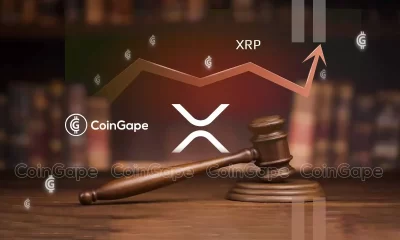
 Price analysis5 months ago
Price analysis5 months agoRipple-SEC Case Ends, But These 3 Rivals Could Jump 500x


